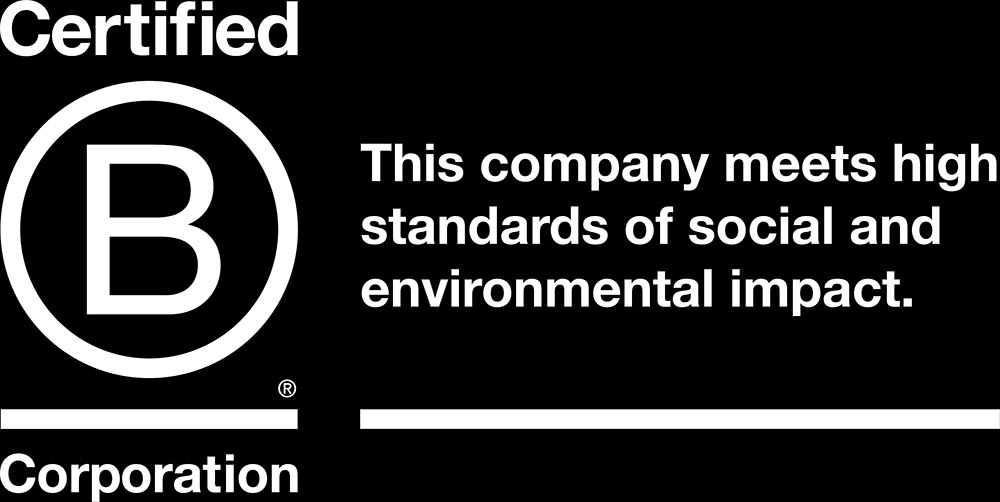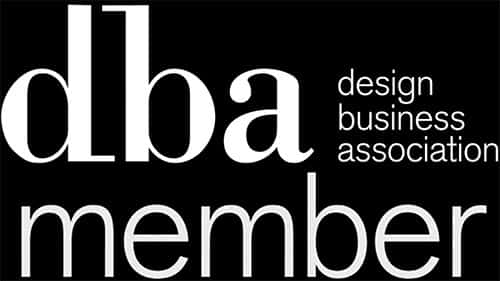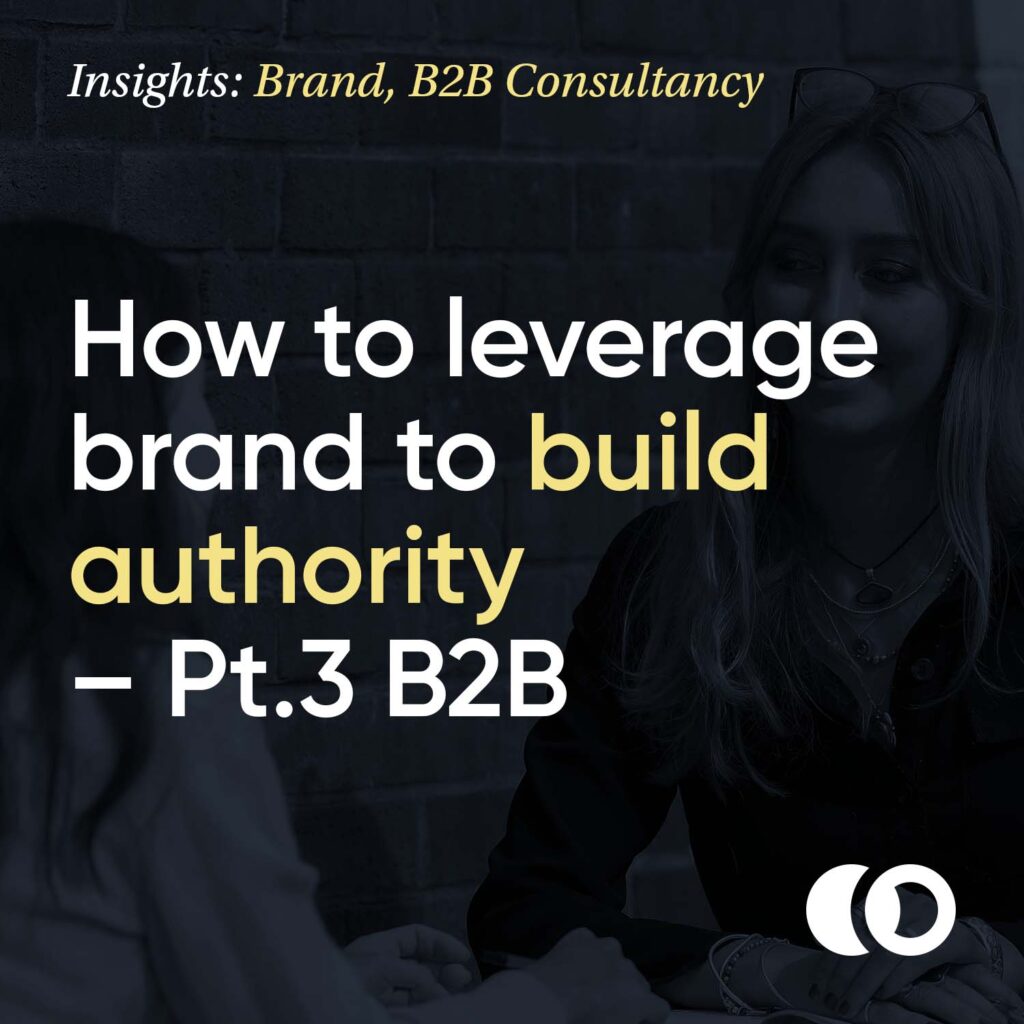
The Archive
How to leverage brand to build authority – Pt.3 B2B Consultancy
Author: Ed Garrett | 10 minute read
The world of B2B Consultancy, much like our beloved creative industry, is highly competitive. Whether you specialise in sustainability, built environment, B Corp, training, HR, supply chain or ESG, you can guarantee that there are a lot of other businesses competing for people’s attention and the same projects.
It’s well acknowledged that your brand and content, when used effectively, will build trust. However, in such a competitive landscape you need more, which is where your brand’s authority and ability to effectively communicate your expertise will make all the difference. Remember, anyone can say they’re an expert, but do you truly walk the talk?
Having now spent years working with and around purpose-led B2B Consultancies, we have seen patterns emerge which begin to separate the good from the great. Drawing from our experience of working with businesses like you, we’ve compiled our top tips to help you to get your brand, website and content marketing activity delivering results and increasing your impact.
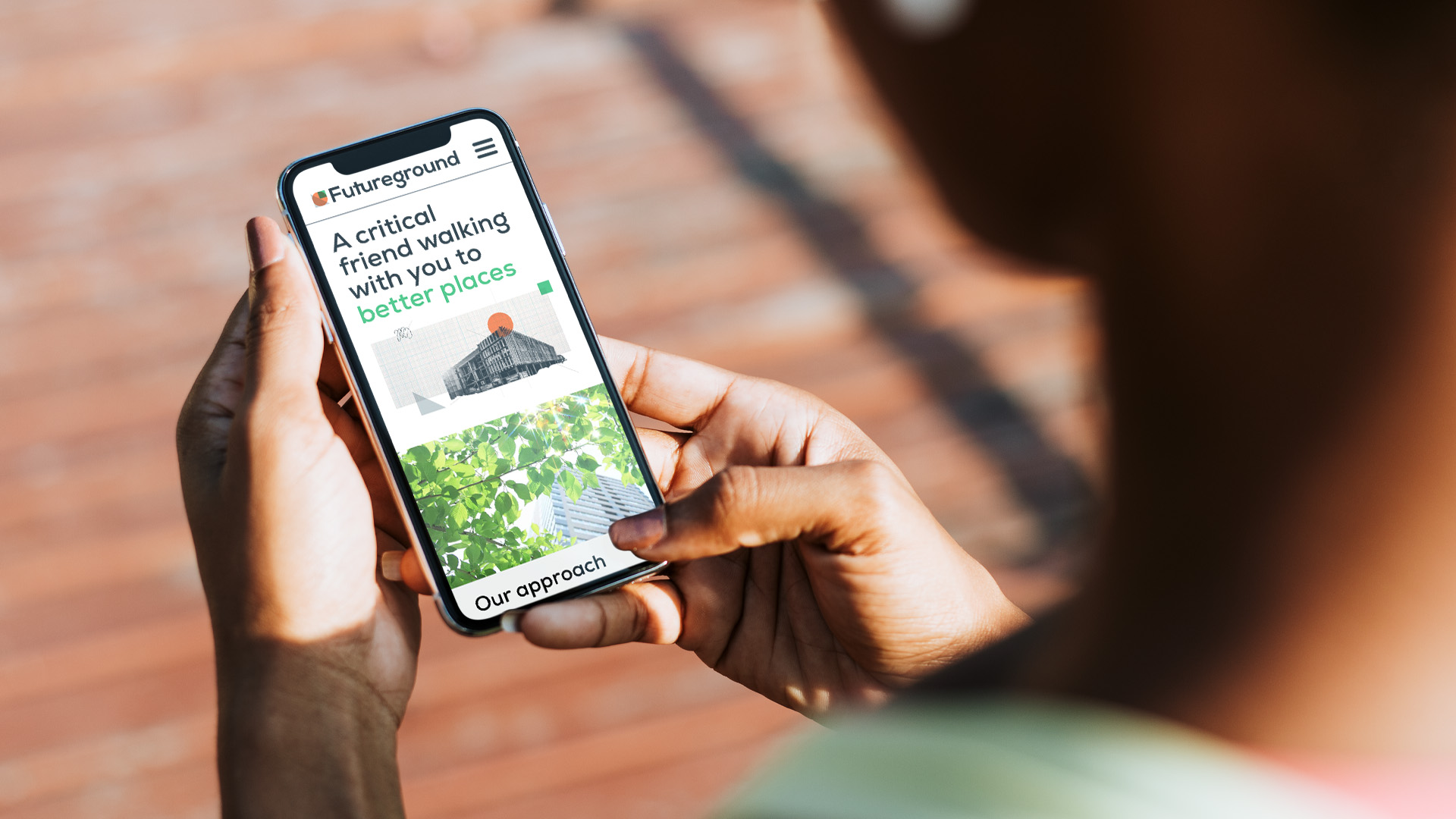
Educate your clients (and don’t covet your expertise)
You’re in the business of knowledge, your clients are hiring you to either augment their existing team in delivering project work, or to train, educate and guide them through a process or journey. Despite the trend to try and productise services in recent years, consultancy is still a service led industry, and often very bespoke. You therefore need to work twice as hard to convince potential clients of the value you offer, where unlike a physical product, they cannot see or touch what you sell before the purchase is made.
Well, that’s not entirely true, as through brand and the content that you publish, you can show what kind of business you are, position yourself as an established organisation, teach your clients about your area of expertise, and celebrate the outcomes you deliver. It was fascinating to look at Accenture’s home page as part of a research project recently, where the design is incredibly slick and the content is roughly 70% thought leadership, insights, case studies and awards. Yes they have a list of services and industries in their top level menu, but they instantly establish credibility and authority before burying you in an overwhelming amount of information.
With 72% of B2B buyers starting their journey online (Salesforce, 2022), your brand and website will be the first impression that most of your potential customers base their decision on, so it’s not something to be overlooked. It’s also no secret that the B2B Consultancy space is relatively straightforward to enter, and therefore incredibly saturated, so your potential clients will be trawling multiple websites and looking at multiple options.
The 2021 BCG Survey collected data from marketing leaders at 330 large B2B companies in seven industries worldwide, of respondents 97% say that brand marketing plays an important role in creating awareness and consideration, and 95% say that brand marketing can help a company differentiate itself from competitors… so this is far more than a ‘nice to have’. With the number of agencies and freelancers offering brand related services growing all the time, it’s safe to say that your competitors and peers are investing in this area.
But how much knowledge should you give away for free? Well, depending on the precise nature of your work, we would say all of it. There may be an element of IP that needs to be protected, but the reason that most organisations use consultancy services is that they don’t have the time to learn the skills themselves, or the resources to recruit the expertise in-house. By openly presenting your knowledge on your website and through your marketing activity, there is only a small risk that your prospective clients will read your content and attempt the work themselves. What’s more likely, is that they will skim through the information that you’ve published and instantly regard you as a highly knowledgeable expert in the field, and therefore a safe investment.
In summary…
- Openly share your knowledge through blogs, insights and white papers
- Don’t be afraid to give you knowledge away
- Develop a visual identity that communicates confidence and maturity
- Demonstrate your expertise through your positioning and marketing
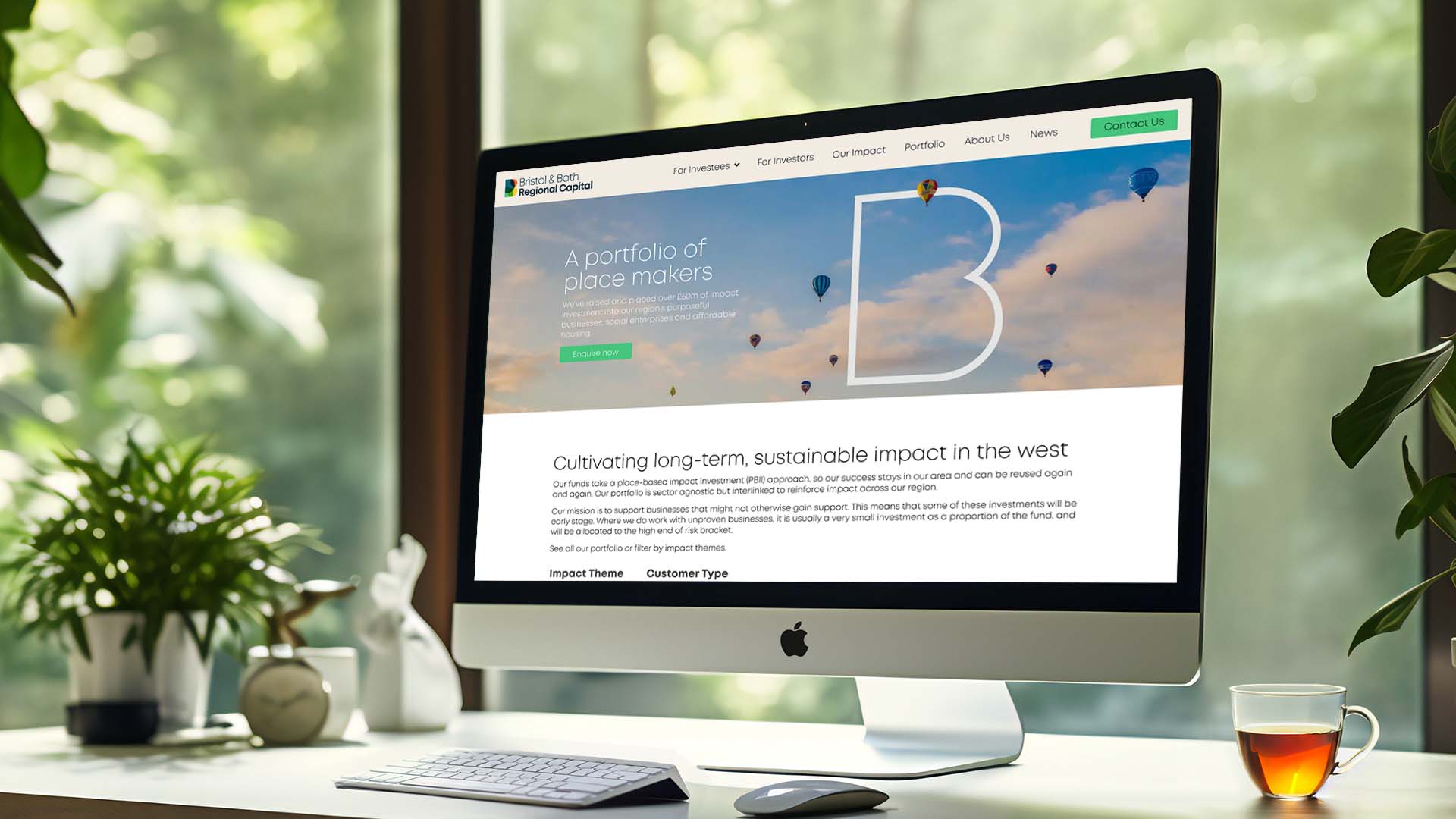
Show don’t tell (and don’t forget to social proof):
When thinking about educating your clients, it’s important to make sure that you show them the reasons why they should work with you, and not just tell them that you are the best option. Anyone can say that they offer a market leading service, but this term becomes disposable if it’s used without any evidence or substance. Market leading by whose standards, yours?
One way to overcome this challenge is through the effective use of case studies, endorsements and testimonials. In other words, social proof.
In a nutshell, social proof is where people look at the actions and decisions of others to guide their own, particularly when they’re uncertain. Take for example you want to try out a new restaurant, you’re far more likely to pick somewhere if it’s got some good reviews on trip advisor to back it up. The same principle applies across all decision makings, including choosing to use a B2B agency.
Social proof plays a pivotal role in building brand authority by instilling trust and credibility in your business. It demonstrates that others have had a positive experience with your brand, and ultimately encourages prospective clients toward choosing your services. To boost social proof, start by collecting client testimonials and case studies that showcase successful collaborations. Highlight well-known clients or partners on your website, and leverage online reviews and ratings to reinforce your brand’s reputation. Share success stories that outline the challenges, your approach, and the outcomes delivered, and if you’re able to, then show any industry recognition or awards you’ve received prominently on your website.
The best time to collect this information from your clients is just after you’ve completed a project, given that you have done a good job, and then again in one or two years time once they are able to measure the long term impact of your work. Offer to make the content available to your clients as it should make them look good too, at very least make sure they are tagged in any social media activity and make them the hero of the story.
There is research from the Gartner Sales Survey indicating that by 2026, 65% of B2B sales organisations will transition from intuition-based to data-driven decisions. Therefore, now is the time to get your ducks in a row and ensure your brand has the data and facts behind it to support the claims it is making. It’s something that we’ve struggled with in the past, but through support from the DBA on measuring design effectiveness it is something that we are starting to embed in our processes
In summary…
- Prioritise developing case studies and testimonials
- Use content to demonstrate the problems you solve and outcomes you deliver
- Communicate effectiveness through data
- Develop a brand and website that oozes confidence
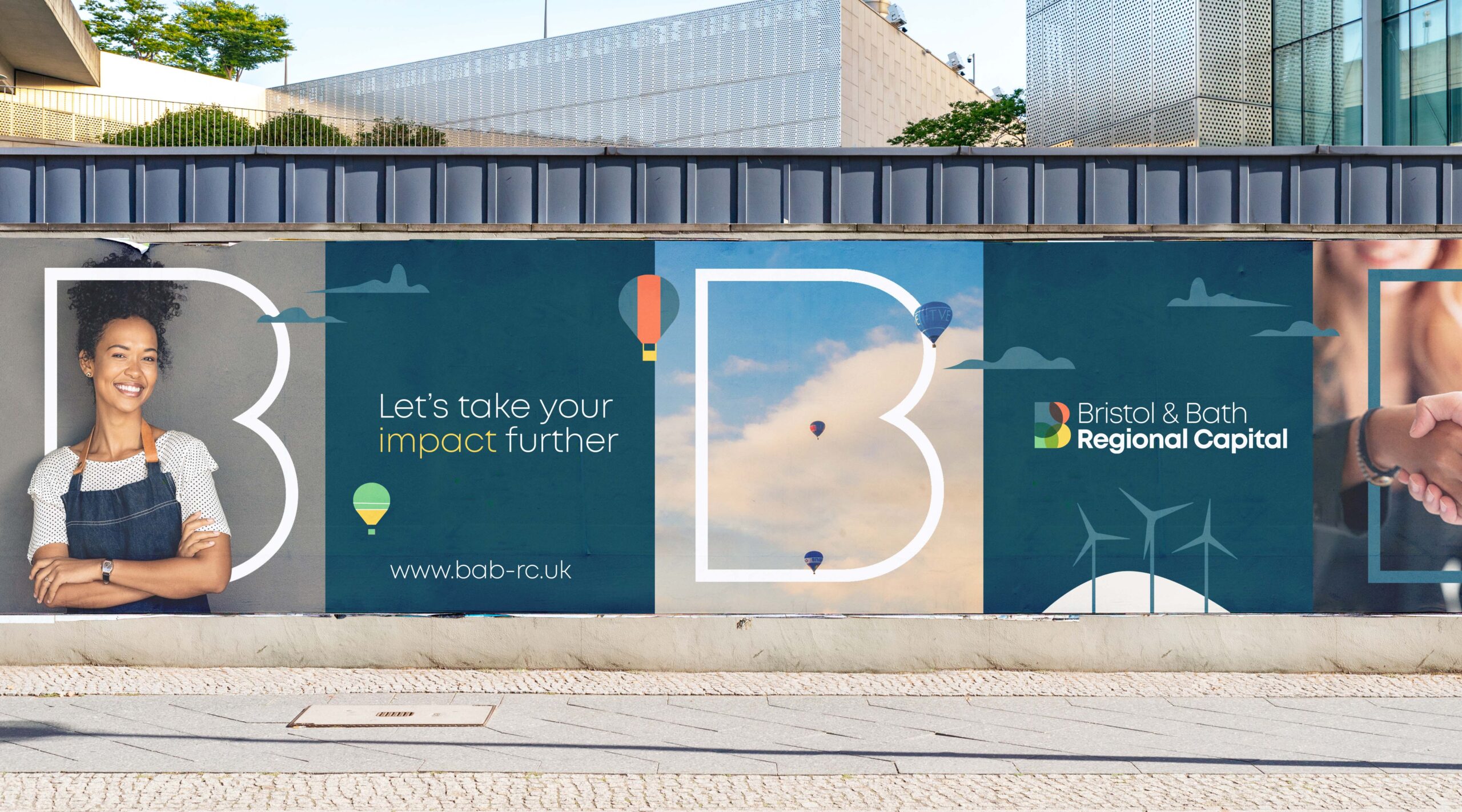
Communicate your purpose (and be consistent)
Depending on how you run and position your business, your purpose is arguably one of the most important and defining elements of your brand. Whether you’re trying to attract your perfect customer, recruit your next star employee, or distinguish yourself from your competition, the reason you exist and an ability to communicate it effectively, has the power to change the way you are perceived by the outside world.
Your people are the face of everything you do, but your brand and website is likely to be what your prospective customers experience before they have had the chance to meet you, so you need to make sure your brand and digital platforms effectively communicate your purpose. As content creators, we spend a lot of time thinking about how to convey information in different ways for different audiences, but for your website and marketing to be truly effective you need to take it back to basics and focus on what makes you different.
Effectively conveying what you do, why you exist and what makes that important is some of the most important information you can have on your website. 68% of B2B buyers prefer to do individual research online rather than involving a sales rep (Deloitte, 2021), so you need to help them understand who you are and find answers to their questions. One way to communicate a lot of information without using an overwhelming amount of words is by utilising visual communication. Photography, infographics and icons not only support your messaging, they also give you an opportunity to reinforce your brand and purpose, while offering a break from all the copy, making information easier to consume and accessible to all.
Advice that we ourselves often remind ourselves, is that people buy from people. In this digital age we’re all on our screens more than ever, but to sell a service you really need to emphasise the human aspects, as, ultimately, what people are investing in is your time. Jane Eumann, creative director of Wolff Olins, believes even though you’re working B2B your audience – at the end of the day – are people, so “there’s no point in creating ‘corporate’ or sterile looking brands for environments in which businesses operate.” (It’s Nice That Article). Use real images of your team, share your brand story, share your team’s insights on your websites to reinforce the notion that there are real people behind it. If your website visitors can see the people delivering the message, they are far more likely to believe what you’re saying.
Another crucial aspect of effectively communicating your purpose is ensuring that your brand doesn’t have ten different voices conveying ten disparate messages. Customers and employees will find it difficult to trust you if your branding and messaging are constantly changing. If the way your business is presented is inconsistent, then the experience that people have with you will also be inconsistent. Would you trust a person that is constantly having an identity crisis?
To align with the leading brands in your market, you need to present a unified visual identity and a message that is consistent across all touchpoints. Maintaining consistency in your branding and messaging can be made easier by using a well-designed brand kit and tone of voice guidelines, enabling your entire team to uphold uniformity across the customer facing elements of your business.
You can either get support with this or do a simple audit of your comms and marketing materials. For example, does the copy and visual content across print, your website and social media integrate seamlessly, or is it more of a disorganised collection of information and posts? If it’s the latter, think about what templates and guidelines you could create and then enforce across the organisation. It may take some time and investment to get right, but will build a far stronger brand, and show everyone that you interact with, that you understand yourself and pay care and attention to your work.
In summary…
- Champion your purpose across all channels
- Use visual communication and make your content accessible
- Celebrate the people behind your brand
- Establish brand and tone of voice guidelines to aid consistency
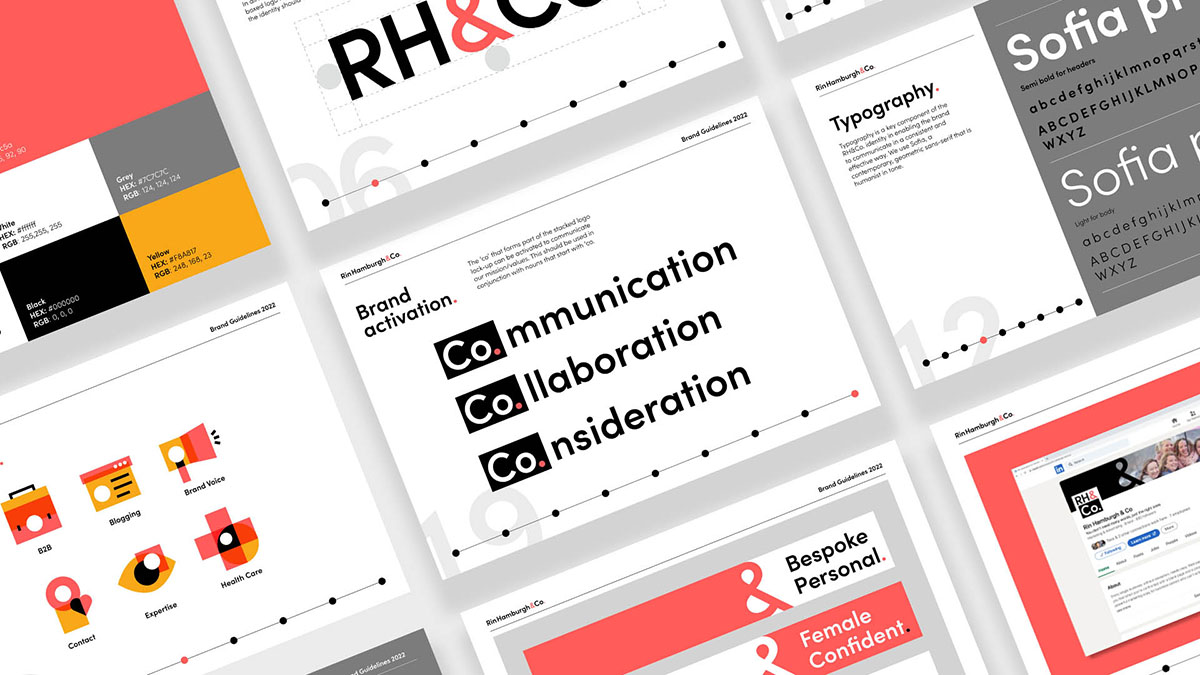
How we implemented and developed our knowledge whilst working with RH&Co.
We have immense admiration for the work carried out by RH&Co. They are exceptional in the field of copywriting and communicating expertise, and we’ve had the privilege of collaborating with them to elevate their brand and communications.
Their previous brand was friendly, approachable and welcoming, which people liked, so the challenge was to create a sharper identity that was more direct, results driven and client focused, whilst still retaining the personable aspect. We created a bold and confident visual identity for RH&Co. that was minimalistic and sophisticated but still full of character. This translated into a brand that was clear and accessible for their audience, and aided them to effectively communicate the services they offer.
The focal point of the ampersand emphasises the importance of collaboration to the business, and encompasses the pivotal role of collaboration in their process. By effectively incorporating imagery and highlighting their team-based approach, they seamlessly interwoven their greatest asset—their people—into the fabric of their branding, ensuring that the human element became an integral and unmistakable part of their brand identity.
The outcome is a strong brand and toolkit for the business that can be harnessed on their website, social media and physical marketing material, both now and in the future. RH&Co. commented that this was so much more valuable in that the elements can be used again and again, and create an overarching consistency that helps to build trust with their audience. This aligned with our overarching emphasis to maintaining consistency across every touchpoint, ensuring that the brand’s message and identity remain uniform and readily recognisable throughout every interaction and platform.
“We have loved working with The Discourse on our branding. They took time to get to know us but also weren’t afraid to push us beyond our comfort zone and show us how much more we could achieve. The way that the brand has been designed means we can activate it in so many different ways, allowing us to have a consistent look and feel while still being creative and fresh.”
Rin Hamburgh, Founder & Director @ RH&Co.
Check out the full case study here. You can also learn more about our work in B2B Consultancy here.
Done right, design builds trust, communicates purpose and positions your organisation successfully at every touch point. If you’re ready to take your business or charity to the next level, get in touch now, as we’d love to have a chat to see if we can help.
So what next...
We hope that this information has helped to highlight the genuine value that brand can bring to your business. It’s important to acknowledge the impact it can have, not only from an external perspective, but also on the psychological impact internally.
At The Discourse, we have been designing incredible brand identities, websites and content marketing campaigns for B2B Consultancies for well over 5 years. We’ve proven that organisations that embrace brand, the web and content are more successful over the long term. Our clients typically spend from £5k to £20k on brand strategy and design, website projects range from £5k to £20k depending on size and functionality.
If you’re ready to take your brand to the next level, you can get in contact today via our contact page or by emailing us at [email protected].


